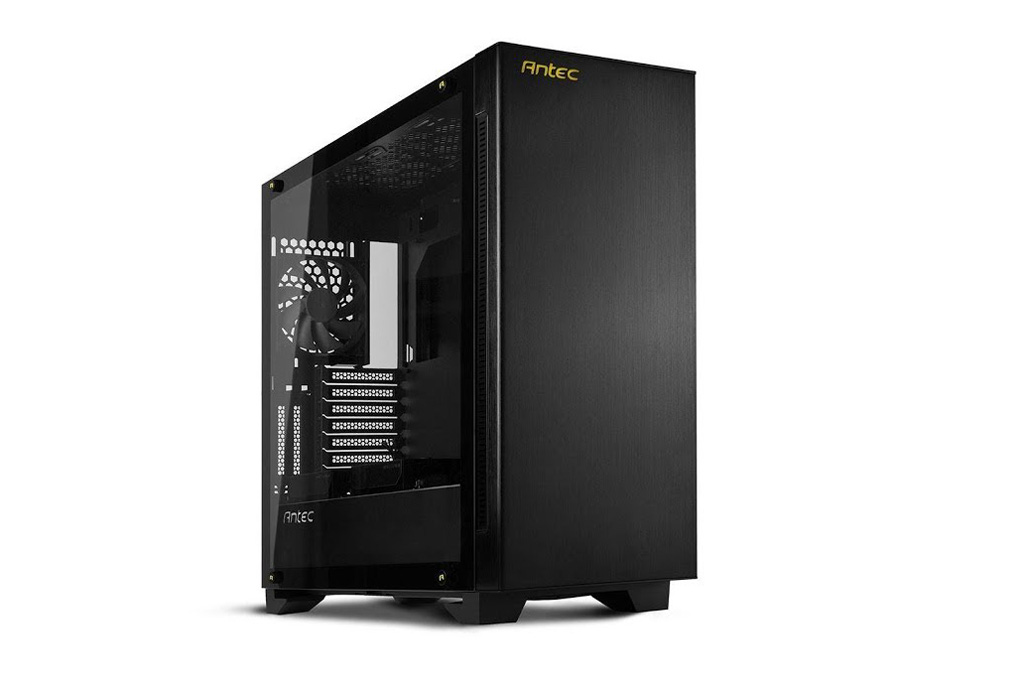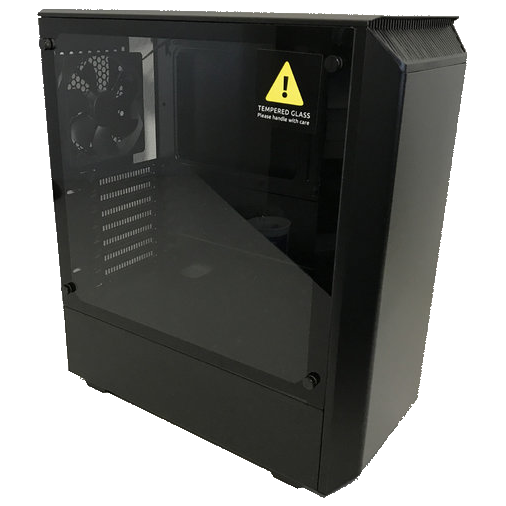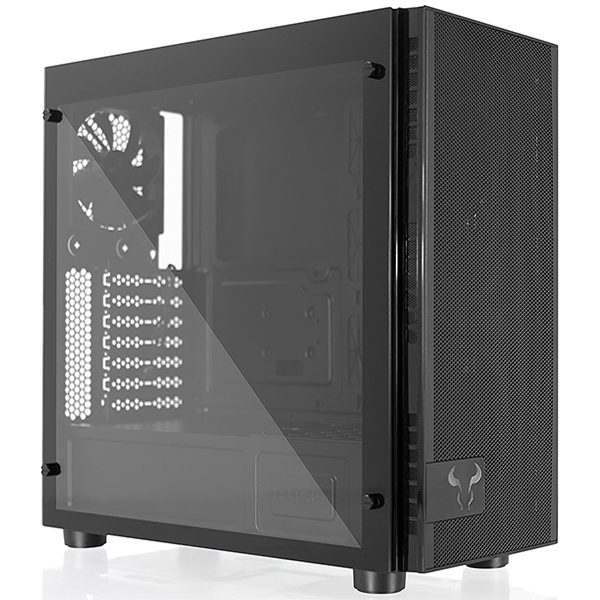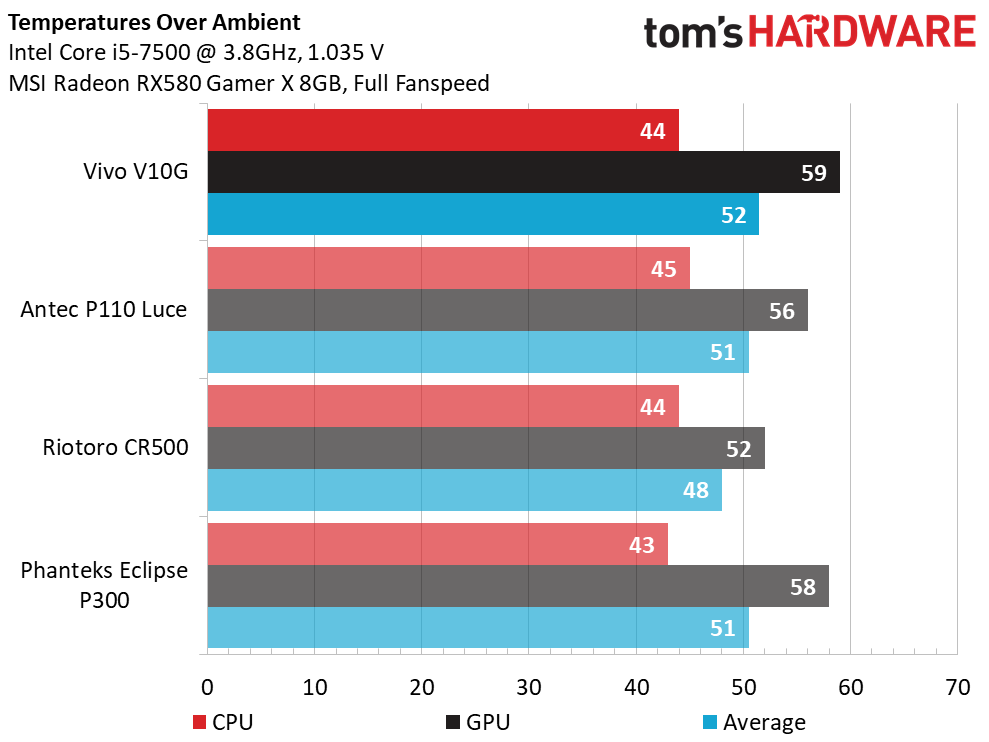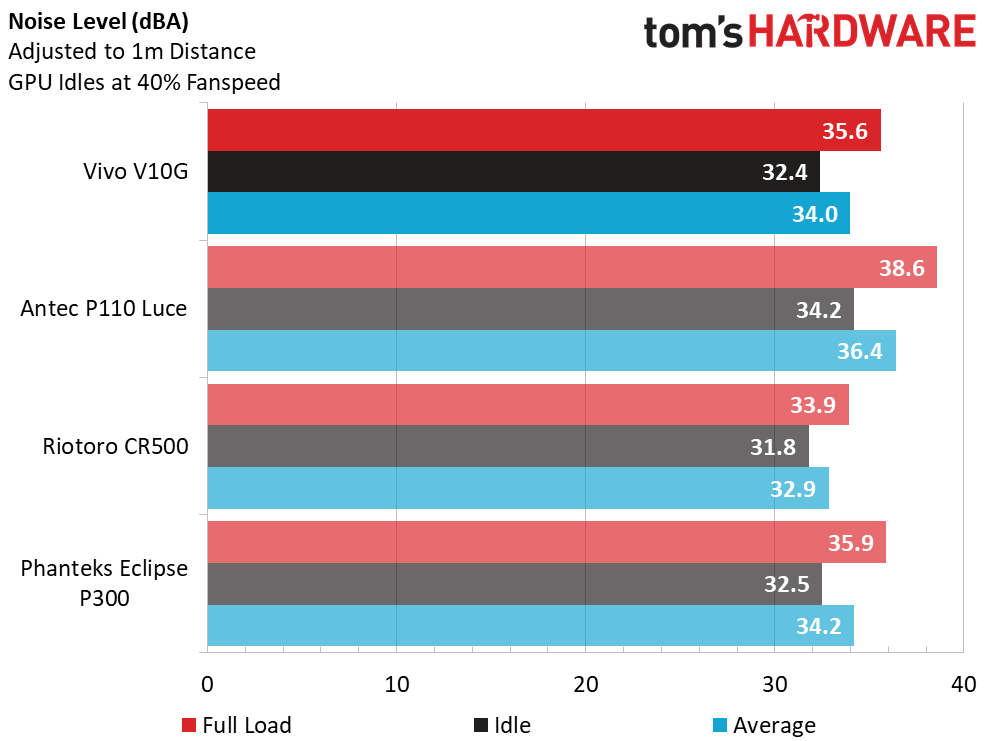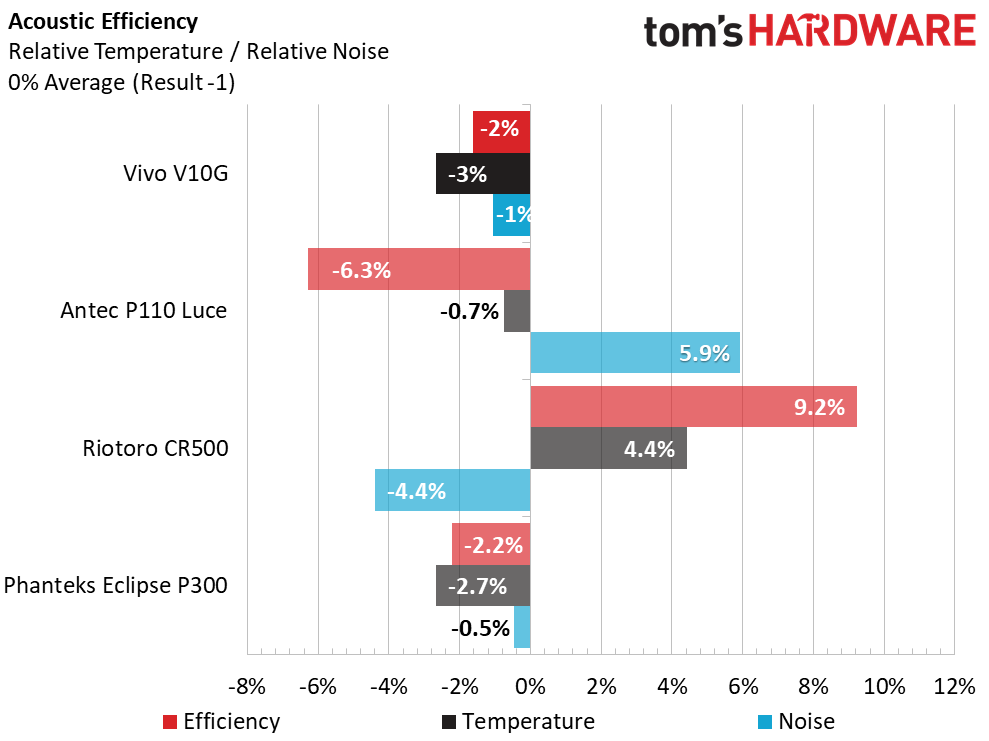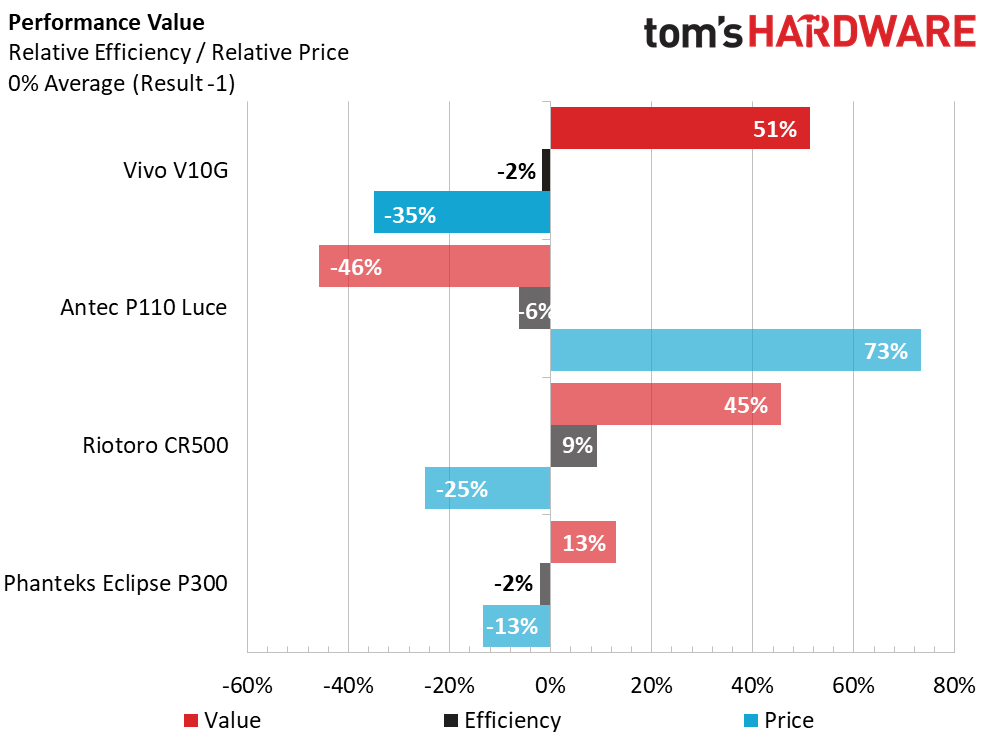Vivo V10G ATX Case Review: Tempered Glass On The Cheap
Why you can trust Tom's Hardware
Benchmark Results & Conclusion
Comparison Cases
For comparison purposes, we used the Antec P110 Luce, the Riotoro CR500, and the Phanteks Eclipse P300 TG. The cases used for comparison are of similar sizes and feature mixtures, and all have tempered-glass side panels.
With the PC under full load, the temperatures on our budget quad-core Core i5-7500 processor, running at 3.8GHz, leveled off at 44° C over the ambient temperature of 25° C. GPU temperatures were high, despite the fact that the case has three 120mm intake fans. We believe this is due to the combination of the open-air style of cooler on our test GPU and the lack of an exhaust fan on the chassis. Although 59° C is not dangerously high, the Vivo's graphics-card temperatures were the highest among the cases in this comparison set.
Acoustics were good at idle, registering just 32.4dBA. We were a bit surprised that, once we cranked things up and the system was under full load, the sound level increased by only a few dBA. The downside: Even though the chassis produced a relatively low 35.6dBA under load, the case rattled.
In terms of acoustic efficiency, the Vivo V10G and the Phanteks Eclipse P300 come in neck-and-neck.
The Vivo V10G's low current street price makes this chassis look like a better deal than it actually is. In reality, this case's middle-of-the-pack thermal and acoustic performance, coupled with its lack of features, its limited liquid-cooling options, and the decades-old design, make it a poor value overall.
We really wanted to like the V10G but, in the end, we can't give it a thumbs-up. That doesn't mean there isn't an audience for a case like this. If you were buying in bulk to build low-cost PCs for an internet cafe or similar scenario, an entry-level chassis with tempered-glass side panels like this might be just what you are looking for. Discriminating DIY-ers, though? Not so much.
MORE: Best Cases
Get Tom's Hardware's best news and in-depth reviews, straight to your inbox.
MORE: All Case Content
Current page: Benchmark Results & Conclusion
Prev Page Hardware Installation & Test ConfigurationSteven Lynch is a contributor for Tom’s Hardware, primarily covering case reviews and news.
